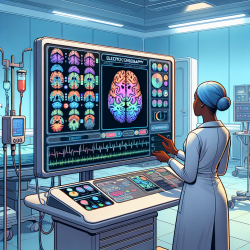Introduction
In the ever-evolving field of neurodiagnostics, the importance of having appropriately trained and qualified personnel cannot be overstated. The recent publication titled "Guidelines for Qualifications of Neurodiagnostic Personnel: A Joint Position Statement of the American Clinical Neurophysiology Society, the American Association of Neuromuscular & Electrodiagnostic Medicine, the American Society of Neurophysiological Monitoring, and ASET—The Neurodiagnostic Society" provides a comprehensive framework for understanding the qualifications necessary for neurodiagnostic personnel. This blog aims to highlight key insights from this document and encourage practitioners to leverage these guidelines to enhance their skills and professional development.
Understanding the Guidelines
The guidelines emphasize the critical role of standardized training, certification, and ongoing education in ensuring the quality of neurodiagnostic procedures. They recommend specific job titles, responsibilities, and the corresponding educational and certification requirements for each role within the field. This structured approach not only helps in maintaining high standards of patient care but also supports the professional growth of neurodiagnostic practitioners.
Key Recommendations for Practitioners
- Continuous Education: The guidelines stress the importance of ongoing education and competency maintenance. Practitioners are encouraged to pursue continuing education units (CEUs) and stay updated with the latest advancements in neurodiagnostics.
- Certification and Credentialing: Obtaining and maintaining relevant certifications, such as those offered by ABRET, AAET, and ABEM, are crucial for demonstrating expertise and commitment to the field.
- Role-Specific Training: Each neurodiagnostic role has specific training and experience requirements. Practitioners should ensure they meet these requirements to perform their duties effectively.
- Quality Assurance: Regular quality assessments and adherence to established protocols are vital for ensuring the accuracy and reliability of neurodiagnostic procedures.
Implementing Data-Driven Decisions
As practitioners in the field of neurodiagnostics, it is essential to make data-driven decisions to enhance patient outcomes. By adhering to the guidelines and utilizing evidence-based practices, practitioners can ensure they are providing the highest quality of care. This involves not only following established protocols but also engaging in research and staying informed about the latest developments in the field.
Encouraging Further Research
The field of neurodiagnostics is dynamic and constantly evolving. Practitioners are encouraged to engage in research and contribute to the body of knowledge in this area. By participating in studies and sharing findings, practitioners can help advance the field and improve patient care.
Conclusion
The "Guidelines for Qualifications of Neurodiagnostic Personnel" provide a valuable resource for practitioners seeking to enhance their skills and professional development. By adhering to these guidelines and committing to continuous education and research, neurodiagnostic personnel can ensure they are providing the highest quality of care to their patients.
To read the original research paper, please follow this link: Guidelines for Qualifications of Neurodiagnostic Personnel: A Joint Position Statement of the American Clinical Neurophysiology Society, the American Association of Neuromuscular & Electrodiagnostic Medicine, the American Society of Neurophysiological Monitoring, and ASET—The Neurodiagnostic Society.










